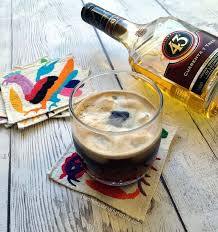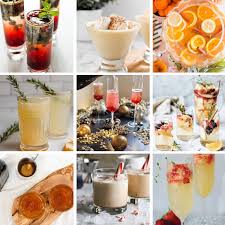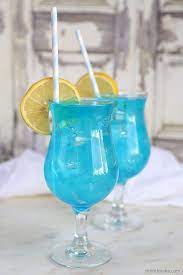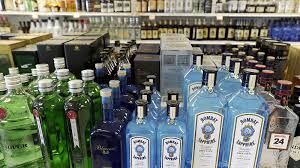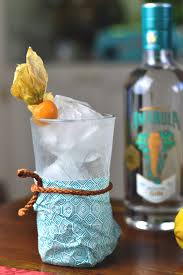Liquor: A Spirited Journey Through Time and Culture
From ancient civilizations to modern-day celebrations, liquor has played a prominent role in human history. It has been a catalyst for social gatherings, a symbol of prestige, and an integral part of cultural traditions across the globe. Let’s embark on a spirited journey through time and explore the fascinating world of liquor.
The origins of liquor can be traced back thousands of years to ancient civilizations such as the Egyptians, Greeks, and Chinese. These early cultures discovered the art of fermentation, transforming fruits, grains, and other ingredients into alcoholic beverages. Liquor quickly became intertwined with religious rituals, medical practices, and everyday life.
As time progressed, liquor production techniques evolved and spread throughout different regions. Distillation emerged as a revolutionary process during the Middle Ages, allowing for the creation of stronger spirits like whiskey and brandy. This advancement not only enhanced the flavors but also extended the shelf life of these precious elixirs.
Each country has its own unique liquor traditions that reflect its culture and heritage. In Scotland, whiskey distilleries dot the landscape, producing renowned single malts enjoyed by connoisseurs worldwide. In Mexico, tequila is synonymous with fiestas and is crafted from blue agave plants grown in designated regions. And in France, champagne embodies elegance and celebration with its effervescent bubbles.
Liquor has also become an integral part of social gatherings and special occasions. Whether it’s raising a glass to toast at weddings or sharing a round of shots with friends at a bar, these moments create lasting memories that connect people across generations. Cocktails have emerged as an art form themselves – mixologists skillfully blend liquors with various ingredients to create tantalizing concoctions that delight the palate.
However, it is important to consume liquor responsibly. Excessive alcohol consumption can lead to health issues and impaired judgment. It is crucial to be aware of one’s limits and to prioritize safety and well-being.
The liquor industry has also undergone significant transformations in recent years. Craft distilleries have gained popularity, offering unique flavors and small-batch productions that cater to discerning tastes. Artisanal gin, flavored vodkas, and botanical-infused liqueurs are just a few examples of the innovative offerings that have emerged.
Furthermore, the rise of mixology culture has sparked a renaissance in cocktail craftsmanship. Bartenders experiment with unconventional ingredients, creating imaginative drinks that push the boundaries of flavor profiles. The art of cocktail-making has become an experience in itself, with speakeasies and trendy bars serving as hubs for creativity and exploration.
In conclusion, liquor is more than just a beverage; it is an embodiment of human history, culture, and celebration. Throughout time, it has evolved from simple fermented drinks to complex spirits crafted with precision and passion. So whether you’re savoring a fine whiskey or enjoying a refreshing cocktail, raise your glass and toast to the rich tapestry of flavors and traditions that liquor brings to our lives. Cheers!
7 Common Questions About Liquor: Explained
- What is the difference between liquor, spirits, and alcohol?
- How is liquor made?
- What are the different types of liquor?
- What is the best way to store liquor?
- How long does liquor last once opened?
- What are some popular cocktails made with specific types of liquor?
- Is there a difference between whiskey and bourbon?
What is the difference between liquor, spirits, and alcohol?
The terms “liquor,” “spirits,” and “alcohol” are often used interchangeably, but there are subtle differences in their meanings.
Alcohol is a broad term that refers to a chemical compound known as ethanol or ethyl alcohol. It is the primary psychoactive ingredient found in alcoholic beverages. Alcohol is produced through the fermentation of sugars by yeast, and it can be found in various forms and concentrations.
Liquor is a more specific term that typically refers to distilled alcoholic beverages. Distillation involves heating a fermented liquid and collecting the vapor that evaporates, then condensing it back into a liquid form. Liquor generally has a higher alcohol content compared to other types of alcoholic beverages like beer or wine. Examples of liquor include whiskey, vodka, rum, gin, tequila, and brandy.
Spirits, on the other hand, is another term used to describe distilled alcoholic beverages. The word “spirits” originated from the concept of distilling being seen as a way to extract the spirit or essence of an ingredient. So essentially, spirits and liquor are synonymous terms.
In summary, alcohol refers to the chemical compound found in all alcoholic beverages. Liquor and spirits both refer specifically to distilled alcoholic beverages that have higher alcohol content compared to beer or wine. While there may be some regional variations in how these terms are used colloquially, they generally point to the same category of strong alcoholic drinks.
How is liquor made?
Liquor, also known as spirits, is made through a process called distillation. While the specific methods may vary depending on the type of liquor being produced, the general steps involved in liquor production are as follows:
Fermentation: The first step in liquor production is fermentation. This process involves converting sugars from various ingredients into alcohol using yeast. Common ingredients for fermentation include fruits (like grapes for wine), grains (such as barley for whiskey), or sugarcane (for rum). Yeast consumes the sugars and produces alcohol and carbon dioxide as byproducts.
Distillation: Once fermentation is complete, the liquid is distilled to separate alcohol from impurities and increase its alcohol content. Distillation involves heating the fermented liquid in a still, which consists of a boiler, condenser, and collection vessel.
– Heating: The fermented liquid is heated in the boiler, causing alcohol to vaporize due to its lower boiling point compared to water and other impurities.
– Condensation: The vaporized alcohol rises through a column or tube and enters the condenser where it cools down. As it cools, it condenses back into a liquid form.
– Collection: The condensed liquid, now higher in alcohol content, drips into a collection vessel called the spirit receiver. This collected liquid is referred to as “new make spirit” or “raw spirit.”
Maturation: Some liquors require maturation or aging to develop their desired flavors and characteristics. For example, whiskey is typically aged in wooden barrels for several years. During this time, the spirit interacts with the wood, absorbing flavors and undergoing chemical changes that contribute to its unique taste profile.
Filtration and Blending: After maturation (if required), some liquors may undergo filtration processes to remove any impurities or unwanted particles that may have developed during aging. Additionally, certain spirits like vodka may go through multiple distillations or filtration steps to achieve a desired level of purity. Blending is also common in the production of many spirits, where different batches or varieties are mixed together to create a consistent flavor profile.
Bottling: Once the liquor has undergone the necessary processes, it is typically filtered one final time and then bottled for distribution and consumption. The bottles are sealed and labeled, ready to be enjoyed by consumers.
It’s important to note that the specific techniques and regulations for liquor production can vary depending on regional laws and traditions. Additionally, different types of liquors may have unique production methods specific to their category, such as the use of botanicals in gin or the addition of caramel coloring in some whiskies.
What are the different types of liquor?
Liquor, also known as spirits, encompasses a wide range of alcoholic beverages. Here are some of the main types of liquor:
- Vodka: A clear and neutral spirit made from fermented grains or potatoes. Vodka is known for its versatility and is often used as a base for cocktails.
- Whiskey: Distilled from grains like barley, corn, rye, or wheat, whiskey is aged in wooden barrels to develop its distinct flavor profile. Types of whiskey include Scotch whisky, Irish whiskey, bourbon, rye whiskey, and more.
- Rum: Made from sugarcane juice or molasses, rum has a rich and tropical flavor profile. It ranges from light-bodied white rum to dark and spiced varieties.
- Tequila: Produced exclusively in Mexico from blue agave plants, tequila can be categorized into different types based on aging: blanco (unaged), reposado (aged up to one year), añejo (aged one to three years), and extra añejo (aged over three years).
- Gin: Known for its botanical infusion of flavors, gin is typically made by distilling grain spirits with juniper berries and other botanicals. It can have varying profiles ranging from dry to floral or citrusy.
- Brandy: Produced by distilling wine or fermented fruit juices like grapes or apples, brandy is aged in oak barrels to develop its distinctive flavors. Cognac and Armagnac are specific types of brandy produced in France.
- Liqueurs: These are sweetened spirits infused with various flavors such as fruits, herbs, spices, or nuts. Examples include amaretto, triple sec, Bailey’s Irish Cream, and Frangelico.
- Mezcal: A Mexican spirit similar to tequila but made from different species of agave plants. Mezcal often has a smoky flavor due to the traditional production process involving roasting the agave hearts.
- Absinthe: A highly alcoholic and anise-flavored spirit that was historically associated with a mysterious reputation. Absinthe is typically green in color and is often consumed by diluting it with water.
- Sake: A traditional Japanese rice wine made through fermentation, sake has a delicate and complex flavor profile. It can be enjoyed both warm or chilled.
These are just a few examples of the diverse range of liquors available worldwide. Each type has its own unique characteristics, production methods, and cultural significance, offering a wide array of choices to suit different tastes and preferences.
What is the best way to store liquor?
Proper storage of liquor is essential to maintain its quality and flavor over time. Here are some guidelines on the best way to store liquor:
- Keep it upright: Unlike wine, liquor should be stored in an upright position. This helps prevent the alcohol from coming into prolonged contact with the cork or cap, which can deteriorate and affect the taste of the liquor.
- Store in a cool, dark place: Liquor should be stored away from direct sunlight and heat sources. Exposure to light and high temperatures can cause chemical reactions that alter the taste and degrade the quality of the liquor. A cool, dark cabinet or pantry is an ideal storage location.
- Avoid temperature fluctuations: Fluctuations in temperature can negatively impact liquor quality. Extreme heat or cold can cause expansion and contraction, leading to changes in flavor and even potential damage to the bottle itself. Aim for a consistent temperature range between 15-20°C (59-68°F).
- Seal bottles tightly: Ensure that bottles are tightly sealed after each use to prevent evaporation and oxidation. Properly sealing the bottle will help maintain its freshness and prevent any unwanted flavors from seeping in.
- Avoid storing near strong odors: Liquor can absorb odors from its surroundings, so it’s best to keep it away from strong-smelling substances like cleaning products or spices. This will help preserve the integrity of its original flavors.
- Consider long-term storage: If you have rare or aged liquors that you want to preserve for an extended period, you may want to invest in specialized storage options such as a wine cellar or a dedicated spirits cabinet with controlled temperature and humidity levels.
By following these guidelines, you can ensure that your liquor remains in optimal condition for longer periods, allowing you to enjoy its full flavor profile whenever you choose to indulge.
How long does liquor last once opened?
The shelf life of liquor once opened can vary depending on the type of liquor and how it is stored. Generally, distilled spirits like whiskey, vodka, rum, gin, and tequila have a long shelf life and can remain drinkable for an extended period of time.
When stored properly in a cool, dark place away from direct sunlight and extreme temperature fluctuations, most liquors can maintain their quality for several years or even indefinitely. However, it’s important to note that over time, some changes in flavor and aroma may occur due to oxidation or evaporation.
On the other hand, liqueurs that contain additional ingredients such as cream or fruit juice have a shorter shelf life once opened. These types of liquors should be consumed within a few months to ensure optimal taste and quality. It’s always best to check the specific recommendations provided by the manufacturer on the bottle for guidance.
To maximize the lifespan of opened liquor bottles, it is advisable to tightly seal them after each use to minimize contact with air. Additionally, storing them upright can help prevent any potential leakage or damage to the cork or cap.
It’s worth noting that while liquor does not spoil like perishable foods, it may lose its distinct flavors and aromas over time if not stored properly or consumed within a reasonable timeframe. Therefore, if you notice any significant changes in taste or appearance in an opened bottle of liquor, it is best to exercise caution and consider replacing it.
Ultimately, using your judgment based on sensory evaluation (such as smell and taste) is crucial when determining whether an opened bottle of liquor is still suitable for consumption.
What are some popular cocktails made with specific types of liquor?
Sure! Here are some popular cocktails made with specific types of liquor:
Vodka:
– Moscow Mule: Vodka, ginger beer, lime juice, and served in a copper mug.
– Cosmopolitan: Vodka, cranberry juice, triple sec, and lime juice.
– Bloody Mary: Vodka, tomato juice, Worcestershire sauce, hot sauce, and various spices.
Rum:
– Mojito: Rum, fresh mint leaves, lime juice, simple syrup, and soda water.
– Piña Colada: Rum, pineapple juice, coconut cream or milk, and blended with ice.
– Daiquiri: Rum, lime juice, and simple syrup.
Gin:
– Martini: Gin and dry vermouth garnished with an olive or lemon twist.
– Negroni: Gin, Campari liqueur, sweet vermouth.
– Tom Collins: Gin, lemon juice, simple syrup topped with soda water.
Tequila:
– Margarita: Tequila, triple sec or orange liqueur (such as Cointreau), lime juice.
– Paloma: Tequila mixed with grapefruit soda or grapefruit juice and topped with a splash of lime.
– Tequila Sunrise: Tequila mixed with orange juice and grenadine for a sunrise effect.
Whiskey/Bourbon:
– Old Fashioned: Whiskey or bourbon muddled with sugar cube and bitters over ice.
– Manhattan: Whiskey or bourbon mixed with sweet vermouth and bitters.
– Mint Julep: Bourbon muddled with fresh mint leaves and simple syrup served over crushed ice.
Brandy/Cognac:
– Sidecar: Brandy or cognac mixed with orange liqueur (such as Cointreau) and lemon juice.
– Brandy Alexander: Brandy mixed with crème de cacao (chocolate liqueur) and cream.
– Vieux Carré: Brandy or cognac combined with rye whiskey, sweet vermouth, and bitters.
These are just a few examples of popular cocktails associated with specific types of liquor. The world of mixology is vast and offers countless options to explore and enjoy. Remember to drink responsibly and always savor your cocktails in moderation. Cheers!
Is there a difference between whiskey and bourbon?
Yes, there is a difference between whiskey and bourbon. While all bourbons are whiskey, not all whiskeys are bourbon. The distinction lies in the specific production process and geographic origin.
Whiskey, spelled with an ‘e’, is a broad category of distilled alcoholic beverages made from fermented grains. It can be produced in various countries, including Scotland (Scotch whisky), Ireland (Irish whiskey), Canada (Canadian whisky), and the United States (American whiskey).
Bourbon, on the other hand, is a type of American whiskey that has its own set of regulations defining its production. To be legally called bourbon, it must meet certain criteria:
- Mash Bill: Bourbon must be made from a grain mixture that is at least 51% corn. The remaining portion can include other grains like barley, rye, or wheat.
- Distillation: It must be distilled to no more than 160 proof (80% alcohol by volume) and entered into the barrel for aging at no more than 125 proof (62.5% alcohol by volume).
- New Charred Oak Barrels: Bourbon must be aged in new charred oak barrels. These barrels contribute to the distinct flavors and color of bourbon.
- Aging: It must be aged for a minimum of two years to be called straight bourbon. If it’s aged less than four years, it must carry an age statement on the label.
- Geographic Origin: While whiskey can be produced anywhere in the world, bourbon must be made in the United States to bear the name “bourbon.” It has become strongly associated with Kentucky due to its historical production in that region.
The production process and specific regulations for bourbon give it a unique flavor profile characterized by sweetness from corn and notes of caramel, vanilla, oak, and sometimes spice.
In summary, while all bourbons are whiskeys, not all whiskeys are bourbons. Bourbon is a specific type of American whiskey that must meet certain requirements regarding ingredients, distillation, aging, and geographic origin. Understanding these distinctions can help whiskey enthusiasts appreciate the nuances and diversity within the world of spirits.


